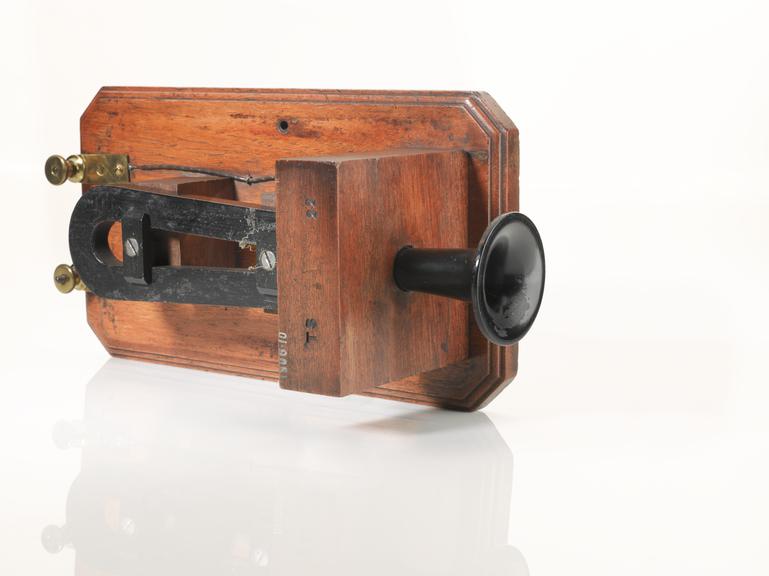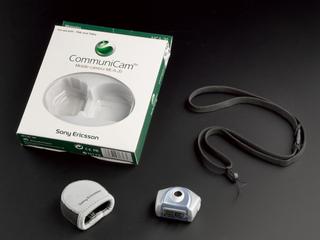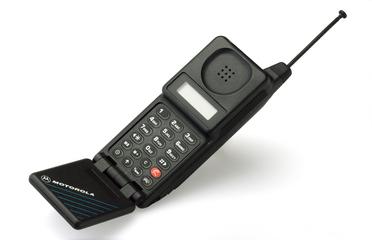Telephone by Alexander Graham Bell, 1877.
Bell telephone instrument used at Lloyds station, patented by Alexander Graham Bell, unknown maker, British, 1877. The mouth/ear piece is not original and was added by the museum in 1906.
More
This form of magnetic telephone, patented by Alexander Graham Bell (1847-1922), was one of the first to be brought into practical use, and demonstrates the transition from his early experimental telephones to a more practical one. It was sometimes called a 'box' telephone, due to the shape of the cover which normally protected the magnet and coils. It was the first telephone to use a permanent magnet, which avoided the need for a battery. The small horn could be used as both a mouthpiece and an earpiece. It was used at the Lloyds Signal Station in Cornwall. A large instrument of this type was also used during a demonstration at the Essex Institute, Salem, Mass., on 12 February 1877. The sounds reproduced by it were sufficiently loud to be audible to a large audience, the words having been shouted into a similar instrument in Boston, 26 km away.
- Measurements:
-
overall: 130 mm x 170 mm x 360 mm, 1.9 kg
- Materials:
- wood (unidentified) , copper (alloy) and metal (unknown)
- Object Number:
- 1906-10/1
- type:
- telephone

















